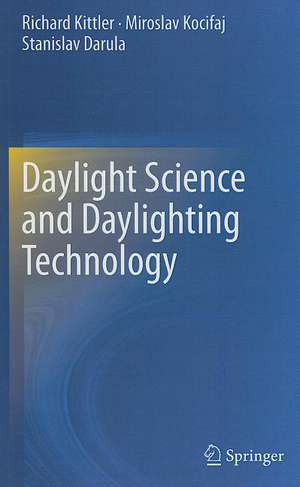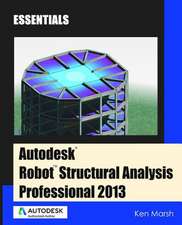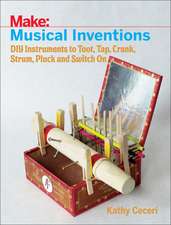Daylight Science and Daylighting Technology
Autor Richard Kittler, Miroslav Kocifaj, Stanislav Darulaen Limba Engleză Hardback – 21 oct 2011
Sun luminance measurements serve as data to calculate typical changes in the daily, monthly, and annual variability characteristics of daylight. Climate-based sky luminance patterns are used as models in predicting daylighting calculation and computer programs applied in architecture and building design. Historically, daylight science and daylighting technology has prioritized photometric methods of measurements, calculation, and graphical tools aimed at predicting or evaluating the daylighting of architectural design alternatives.
However, due to a heightened awareness of general health and well-being, sunlight exposure and freedom from visual discomfort while undertaking visual tasks are now equally prioritized. Therefore, in order to assure optimal environmental quality, daylighting technology must be based on sound science.
Daylight Science and Daylighting Technology, by Richard Kittler, Miroslav Kocifaj, and Stanislav Darula, sketches the entire evolution of daylight science from atmospheric science through apt visual workplace psychophysics.
| Toate formatele și edițiile | Preț | Express |
|---|---|---|
| Paperback (1) | 643.65 lei 6-8 săpt. | |
| Springer – 30 oct 2014 | 643.65 lei 6-8 săpt. | |
| Hardback (1) | 672.76 lei 6-8 săpt. | |
| Springer – 21 oct 2011 | 672.76 lei 6-8 săpt. |
Preț: 672.76 lei
Preț vechi: 791.48 lei
-15% Nou
Puncte Express: 1009
Preț estimativ în valută:
128.75€ • 133.92$ • 106.29£
128.75€ • 133.92$ • 106.29£
Carte tipărită la comandă
Livrare economică 14-28 aprilie
Preluare comenzi: 021 569.72.76
Specificații
ISBN-13: 9781441988157
ISBN-10: 1441988157
Pagini: 407
Ilustrații: XXII, 341 p.
Dimensiuni: 155 x 235 x 24 mm
Greutate: 1.32 kg
Ediția:2012
Editura: Springer
Colecția Springer
Locul publicării:New York, NY, United States
ISBN-10: 1441988157
Pagini: 407
Ilustrații: XXII, 341 p.
Dimensiuni: 155 x 235 x 24 mm
Greutate: 1.32 kg
Ediția:2012
Editura: Springer
Colecția Springer
Locul publicării:New York, NY, United States
Public țintă
ResearchCuprins
Preface.- Introduction.- Short historical review of daylight utilisation by living creatures.- Daylight photometry: history, principles and empirical development.- Propagation of light in the atmospheric environment.- Sky luminance characteristics.- Possibilities to simulate year-round changes of the local daylight climate.- Fundamental principles for daylight calculation methods.- Analytical calculation methods and tools for the design of un-glazed apertures.- Daylight methods and tools to design glazed windows and skylights.- Modelling daylight distribution in complex architectural spaces.- The neurophysiology and psychophysics of visual perception.- Discomfort and disability glare in the visual environment.- Index.
Textul de pe ultima copertă
Sunlight profoundly influences the Earth's atmosphere and biosphere. Nature fuels the evolution of all living things, their visual systems, and the manner in which they adapt, accommodate, and habituate.
Sun luminance measurements serve as data to calculate typical changes in the daily, monthly, and annual variability characteristics of daylight. Climate-based sky luminance patterns are used as models in predicting daylighting calculation and computer programs applied in architecture and building design. Historically, daylight science and daylighting technology has prioritized photometric methods of measurements, calculation, and graphical tools aimed at predicting or evaluating the daylighting of architectural design alternatives.
However, due to a heightened awareness of general health and well-being, sunlight exposure and freedom from visual discomfort while undertaking visual tasks are now equally prioritized. Therefore, in order to assure optimal environmental quality, daylighting technology must be based on sound science.
Daylight Science and Daylighting Technology, by Richard Kittler, Miroslav Kocifaj, and Stanislav Darula, sketches the entire evolution of daylight science from atmospheric science through apt visual workplace psychophysics.
Sun luminance measurements serve as data to calculate typical changes in the daily, monthly, and annual variability characteristics of daylight. Climate-based sky luminance patterns are used as models in predicting daylighting calculation and computer programs applied in architecture and building design. Historically, daylight science and daylighting technology has prioritized photometric methods of measurements, calculation, and graphical tools aimed at predicting or evaluating the daylighting of architectural design alternatives.
However, due to a heightened awareness of general health and well-being, sunlight exposure and freedom from visual discomfort while undertaking visual tasks are now equally prioritized. Therefore, in order to assure optimal environmental quality, daylighting technology must be based on sound science.
Daylight Science and Daylighting Technology, by Richard Kittler, Miroslav Kocifaj, and Stanislav Darula, sketches the entire evolution of daylight science from atmospheric science through apt visual workplace psychophysics.
Caracteristici
Written by a leading authority on sky model formulation and daylight measurement Includes information on non-overcast skies and year-round situations important for energy saving calculations, not included in other books Includes a historical overview of advancements and developments in human vision and photonic studies Analyzes recent research trends in daylight illumination technology in improving health and comfort in human environments, using neuroscience, the work of S.S.Stevens and the invariably missed late work of R.G.Hopkinson towards redeveloping an apt discomfort glare formula and application technology Refines daylight theory and introduces new calculation methods and computer tools for programs such as window design MAM and novel hollow light guides HOLIGILM Includes supplementary material: sn.pub/extras












